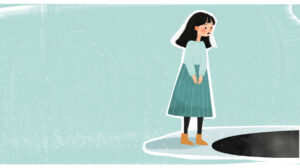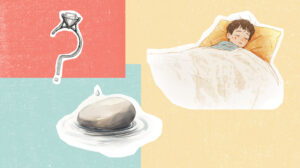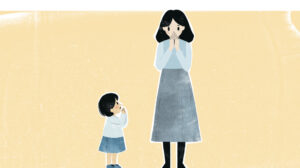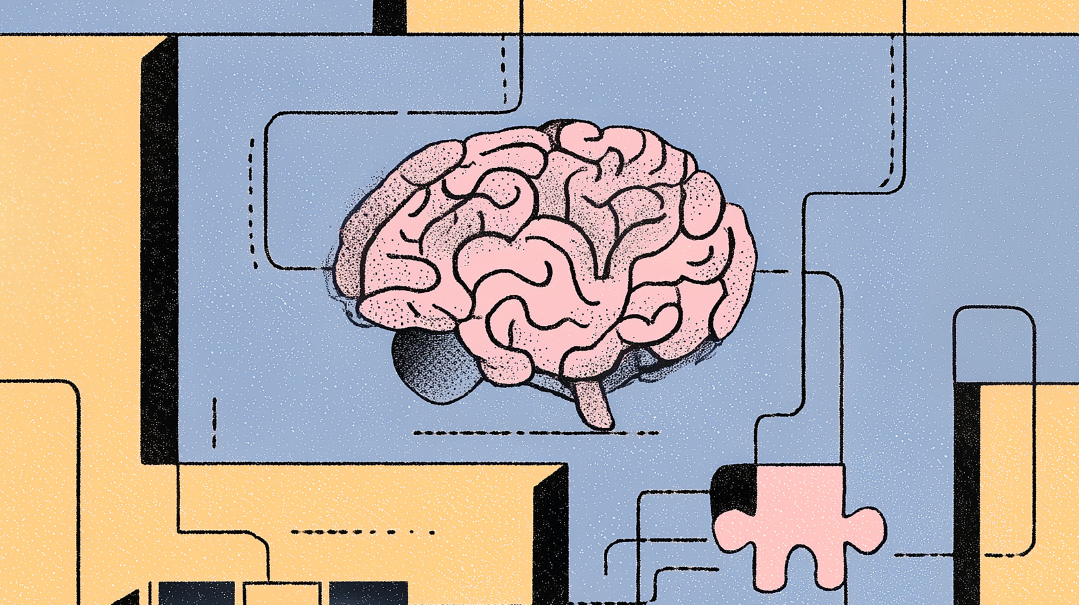The Secret in My House

For many years, two sisters never revealed to anyone that their mother was … different. That she never cooked or cleaned, not even for Shabbos. That verbal and physical abuse were everyday events. Decades later, they finally discovered that their mother was suffering from an agonizing mental illness
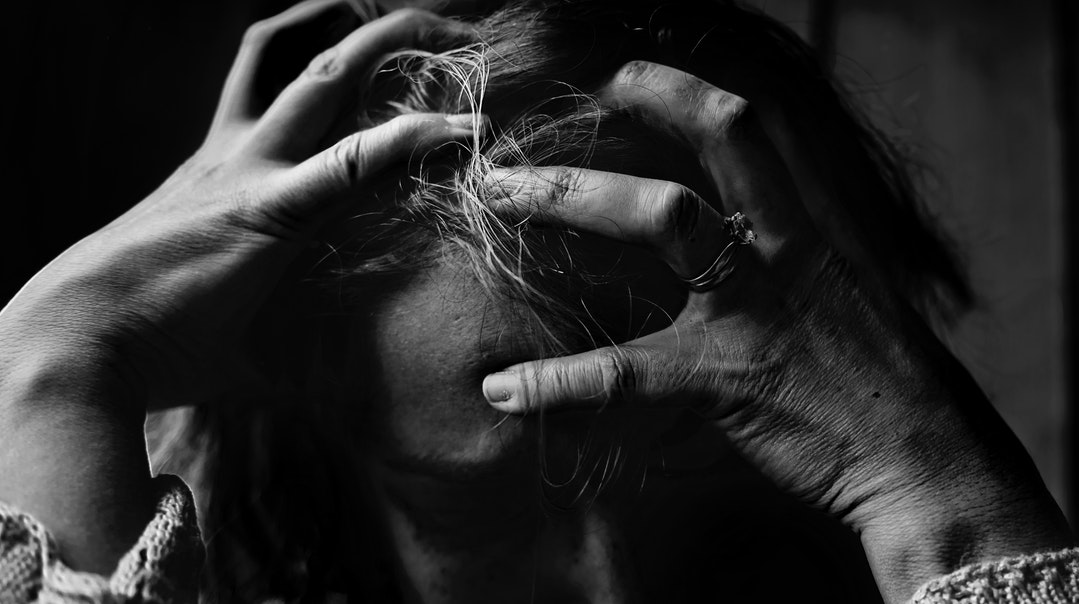
If you were to meet Maya* — a competent, cheerful, put-together woman — you would never guess that buried within her is a painful family secret that she has kept from almost every single person she knows. A prominent businesswoman, many of her customers and friends look up to her as the ideal mother, wife, and spiritual advisor. She regularly welcomes guests into her spotless home and her children are a constant source of PTA-conference nachas.
Only six people in the world know of her carefully guarded family secret — her father, sister, brother-in-law, one neighbor, her husband (who didn’t know until after they were married), and now me, a Mishpacha writer to whom she has agreed to tell her story. That’s it. Not any other family members, not her best friend of many years, and not her seminary girlfriends with whom she established a bond for life. None of them know that Maya was raised in a turbulent, fractured home by a mother with a mental illness called borderline personality disorder (BPD).
Living in Fear
From the outside, it isn’t immediately obvious that Maya’s mother, Claire,* suffers from borderline personality disorder. She doesn’t dress peculiarly or say socially inappropriate things at simchahs. Yet, as Maya remembers from her childhood, Claire was almost always upset and would be angered by the smallest things. She would shout insults at her two daughters and husband, and then moments later, schmooze with her friends as if nothing had happened. She attempted to control every aspect of her daughters’ lives and would have outbursts if anything didn’t go exactly her way.
What Maya didn’t realize at the time was that her mother was exhibiting classic signs of BDP, the main feature of which is a pervasive pattern of instability in interpersonal relationships, self-image, and emotions. Another common symptom, which affects Claire, is a frantic effort to avoid real or imagined abandonment. The irony is that these fears cause her to act in a difficult manner, which in turn makes it hard for people to maintain a close relationship. Consequently, Claire’s worst fears become warranted.
“Because people with BPD have a hard time integrating a person’s good and bad traits, their current opinion of someone is often based on their last interaction with them,” explain Paul T. Mason and Randi Kreger, coauthors of Stop Walking on Eggshells: Taking Your Life Back When Someone You Care About Has Borderline Personality Disorder. To understand what it feels like to have BPD, they offer a telling metaphor: “Individuals with BPD are like people with third-degree burns over 90 percent of their body. Lacking emotional skin, they feel agony at the slightest touch or movement.” (For more on BPD, see sidebar.)
A Traumatic Childhood
“When I was really young, I thought everybody’s mother was like mine,” Maya remembers. “Then I visited a friend’s home and saw the way she interacted with her mother. I couldn’t get over it. I thought, Aren’t you scared of her? Soon it became apparent to me that my mother was different than all the other mothers.”
Like many children with a BPD parent, Maya believed that she was to blame for her mother’s emotional volatility. She thought that she could control the erratic outbursts — if only she would be good enough. If I was a better girl, would my mother stay calm? Maya wondered. Since she was always worried that something she might say or do would instigate an explosive response, she worked hard to behave well. As a result, her relationship with her younger sister, Michal,* was far from typical.
“My sister and I were extremely close. There was no normal sibling rivalry, no fighting with one another, and I thought this was normal until I started raising my own family and saw that normal children fight with one another,” Maya shares. “Growing up, we were so frightened of our mother’s volatility, we made sure to be very, very quiet so that we wouldn’t upset her. Which was, of course, impossible because no matter how good we were, we made her angry.”
Maya always tried to protect her little sister, who was several years younger. She mothered Michal through splinters, clothes shopping, and test anxiety. Finals season was especially stressful since Claire was known to explode if anything less than an A was brought home on a test or assignment. Michal remembers when she injured herself on the playground as a little girl and ran to her sister instead of her mother because, as she explains: “My mother hyperventilated all day long. Everything was an emergency, possibly life-altering, always threatening. She didn’t let me cross the street by myself until I was in high school. She still told me what to wear and not wear well into my teens, and if I disagreed, it was World War II. Whatever image you have of someone who is ‘chilled out,’ my mother was the polar opposite.”
As with many BPD individuals, Claire believed that whatever her children did was a direct reflection on her. As such, she was obsessed with her children’s performance and controlled every aspect of their lives. Maya responded to Claire’s erratic nature by being the good girl. She always brought home a straight A report card, never acting out or being a “normal” kid. PTA meetings were full of “your daughter is so mature for her age” accolades, and her mother gloated about her daughter’s school performance to anyone who would listen.
Still, no matter how perfect Maya tried to be, her mother would grab her by the hair and drag her across the kitchen if Maya hadn’t located an item in the house that her mother was searching for. When Claire would lash out at her husband, Maya fell into the role of peacemaker, trying to work things out so that her father wouldn’t walk out on the family.
BPD distorts and, at times, removes normal mother/child boundaries. Michal recalls no privacy, her mother entering any room, at any time, including bathroom and bedroom. Maya tried to hide private things from her mother, at one point even attempting to keep a diary. When her snooping mother found the diary, Maya paid dearly for it. Whenever possible, she spent Shabbosim at her friends’ houses. Her friends thought she and her mother were unusually close, not realizing that it was enmeshment and control that they were seeing, not intimacy.
Both Maya and Michal found respite in friendships outside of the house, but the shame of their dysfunctional home kept those relationships on a superficial level. Without any real outlet, the two sisters suffered in silence for years.
Substitute Mother
Although the idyllic family façade was well kept up, a particularly attentive neighbor — Mrs. Markowitz* — eventually picked up on the subtle cues that something was not quite right. Her suspicions were confirmed when Maya approached her one day. A teenager at the time, Maya was upset because her mother refused to let her do something that most high school students were allowed to do. She wanted to know if Mrs. Markowitz thought there was anything odd about her mother’s refusal.
It was a simple question, but Maya admits that her facial expression likely revealed more than her query. “I would always scream with my eyes to my teachers, neighbors, and friends’ mothers because I didn’t have the courage or words to ask for the help I desperately needed. I was always searching for a mother figure in my life to show me what it felt like to be loved. Still, I pretended like everything was just fine in my life because I hated the thought of being stigmatized,” Maya explains. “I suppose in this one instance, I must have been sending my neighbor a cry for help without actually saying the words.”
Mrs. Markowitz seemed to know exactly how to help the anguished teenager. She responded to Maya’s seemingly innocent question with the utmost care, devoting her full attention and offering emotional support. Maya found the conversation so comforting that, over time, she found more reasons to visit Mrs. Markowitz — each time, revealing more and more about her family life. This neighbor eventually became the only confidante Maya turned to outside of the family. Years later, her sister also confided in Mrs. Markowitz.
Today, Mrs. Markowitz is still an instrumental pillar of strength and support in both of their lives, and a grandmother of sorts to their children. Michal reflects: “Children want to feel normal. I had the whole world on my shoulders. Mrs. Markowitz was a reality check. She helped me see that my mother is not a well person — and that it wasn’t my fault.”
Processing the Pain
Even though Maya and Michal have built healthy families of their own, they still live in fear that somehow they carry their mother inside of them — that they could, when not vigilant, respond to their own children in the same erratic way they were raised.
They have each compensated for their mother’s abuse differently. Michal is now remarkably even-keeled — she takes all of life in stride. Her friends, who know nothing about her mother, marvel at her ability to stay calm no matter what kind of calamities threaten the peace. She also chose a geographic cure, settling with her family in a community that is hundreds of miles away from Claire. She finds the distance between them to be a source of great comfort. She doesn’t have to live in daily fear anymore, as visits are infrequent.
But such a survival strategy doesn’t entirely eliminate the long-lasting impact of being raised by a mother who expressed her rage with physical and emotional abuse: “I find it difficult to enjoy physical contact with my children or to say I love you,” Michal admits. “Growing up, physical contact meant getting beaten. I saw and heard things between my parents I shouldn’t have witnessed — my mother harassed my father, and he just took it from her. As a child, I concluded that emotions are dangerous, and so I really have to force myself to hug my children. I adore them, so that’s really sad.”
When Maya got married, she was determined to create a different type of atmosphere for her family. “We lived in filth, and nothing in the house was taken care of normally,” she recalls of her childhood home. “No laundry was ever done unless we did it ourselves, but we could scarcely find laundry detergent. If we got something soiled, my mother would simply buy another one instead of washing what we already had.
“My mother never cooked. If we were to eat on Shabbos, my father had to cook it, or we relied on take-out. Our home was a cluttered mess, impossible to clean up for Shabbos. I would try so hard to clean up, yet scarcely made a dent in the disorder. Our mother would be screaming at us because she wanted something we couldn’t find, and trying to reason with her was impossible. Our father coped with the chaos in our home by being mostly absent, because he couldn’t deal with our mother either.”
In response to the turmoil she left behind, Maya worked hard to build a clean, warm, loving home. It is usually spotless, even though the busy chaos of many children threatens to alter that pristine quality on a daily basis. Her “baby,” now over age two, is never far from Maya’s loving arms. Maya treats her employees like gold, and they work for her for years. Much of her life now is a statement of her strength of character, and, to the example set by her mother that she chose not to duplicate.
As an antidote to the Shabbosim of her youth, Michal also pours much love and devotion into Shabbos preparations. “As a child, from Sunday morning till Friday, I would live with anxiety: Oh no, Erev Shabbos is coming,” she says. Now she anticipates Shabbos with joy.
A Broken Bond
Although Maya chose to live near her mother, she dreads contact and keeps it to a minimum. While her friends enjoy shopping with their mothers, Maya avoids this entirely because Claire criticizes whatever she wears. As in her childhood, nothing is quite good enough. Simchahs are never wholehearted joyous affairs because Maya is always terrified about what her mother might say or do. Memories of kiddushim, brisim, and bar/bat mitzvahs are tinged by the painful insults Claire dished out.
A woman mature in years, Maya is still afraid of the judgment she will feel from others if they were to know that for her, the word mother does not bring up a warm, fuzzy feeling. She associates her mother with fear.
Both Maya and Michal are still troubled and sad about the absence of a loving mother in their lives. They each, however, are coming to a place of peace and acceptance, particularly as each has achieved strong, enduring marriages and are raising large families. Since they got married, they both consult daas Torah regarding how to fulfill kibud av v’eim while still protecting themselves from their mother’s ongoing verbal and physical abuse.
Claire eventually entered into psychiatric treatment (which is how the sisters came to learn of the diagnosis of borderline personality disorder), and both pray for a refuah for their mother and the family.
Michal now keeps Claire’s illness in perspective: “I’m at the point where I think, nebach on you that you can’t enjoy your children and grandchildren. I am way past the anger. G-d gave me this nisayon and my parents were the vehicle. When I was a kid, it bothered me so much that I wasn’t like everyone else. Now, I’m a better parent because I really focus on making sure that every one of my children gets what he or she needs.”
She adds, “When children are really accomplished, we often say that they turned out that way because of the parents. Yes it is. I am who I am because of my parents.”
Maya concurs with her sister’s perspective: “I thank HaKadosh Baruch Hu for guiding me and showing me how to give my children the knowledge, every single day, that they are loved. This nisayon has led me to a deep place of connection to Hashem, of incredible sensitivity towards others, and a keen awareness of how powerful words can be.”
To this day, Maya yearns for a kind word from someone else, a compliment, anything that will mend the heartache she suffered over the years. There was a time that she thought of her heart as truly broken. But then she married, and she became a mother, many times over, and she has come to recognize the adage: bone that is broken, and then healed, is stronger than the original bone.
When Maya and Michal reflect on their lives, they can’t figure out if who they are is in spite of their mother, or because of her. But they don’t dwell on this. What matters to them most is that their children are growing up feeling safe, secure, and loved.
“Some problems will never be fixed,” admits Michal in a soft-spoken yet resolute tone. “I don’t know that my mother and I will ever be able to enjoy a loving relationship. But I will never close the door completely, should Hashem bless us with the healing we would need.”
Defining Borderline Personality Disorder
Researchers don’t know what causes borderline personality disorder. Most professionals believe that BPD is likely due to biological and genetic factors, social factors (such as how a person interacts in their early development with their family, friends, and other children), and psychological factors (the individual’s personality and temperament, shaped by their environment and learned coping skills to deal with stress). This suggests that no single factor is responsible — rather, it is the complex and likely intertwined nature of all three factors that is important.
This disorder occurs in most by early adulthood. The unstable pattern of interacting with others has persisted for years and is usually closely related to the person’s self-image and early social interactions. A person with this disorder will also often exhibit impulsive behaviors and have a majority of the following symptoms:
- frantic efforts to avoid real or imagined abandonment
- a pattern of unstable and intense interpersonal relationships characterized by alternating between extremes of idealization and devaluation
- identity disturbance, such as a significant and persistent unstable self-image or sense of self
- impulsivity in at least two areas that are potentially self-damaging (e.g., spending, substance abuse, reckless driving, binge eating)
- recurrent suicidal behavior, gestures, or threats, or self-mutilating behavior
- emotional instability due to significant reactivity of mood (e.g., intense episodic dysphoria, irritability, or anxiety usually lasting a few hours and only rarely more than a few days)
- chronic feelings of emptiness
- inappropriate, intense anger or difficulty controlling anger (e.g., frequent displays of temper, constant anger, recurrent physical fights)
- transient, stress-related paranoid thoughts or severe dissociative symptoms
Borderline personality disorder, which affects approximately 2 percent of the population, is more prevalent in women (75 percent of sufferers are female). Like most personality disorders, BPD typically decreases in intensity with age, with many people experiencing few of the most extreme symptoms by the time they are in their 40s or 50s.
Source: John Grohol, PSY.D, Reference American Psychiatric Association. (1994). Diagnostic and statistical manual of mental disorders, fourth edition. Washington, DC: American Psychiatric Association.
Good Guides
How do you cope — and heal — from the pain of having a BPD parent? These two highly regarded books can serve as a guiding light on the road to recovery:
- Stop Walking on Eggshells: Taking Your Life Back When Someone You Care About Has Borderline Personality Disorder, by Paul T. Mason and Randi Kreger
- Understanding the Borderline Mother: Helping Her Children Transcend the Intense, Unpredictable, and Volatile Relationship, by Christine Ann Lawson
(Originally Featured in Family First)
Oops! We could not locate your form.

